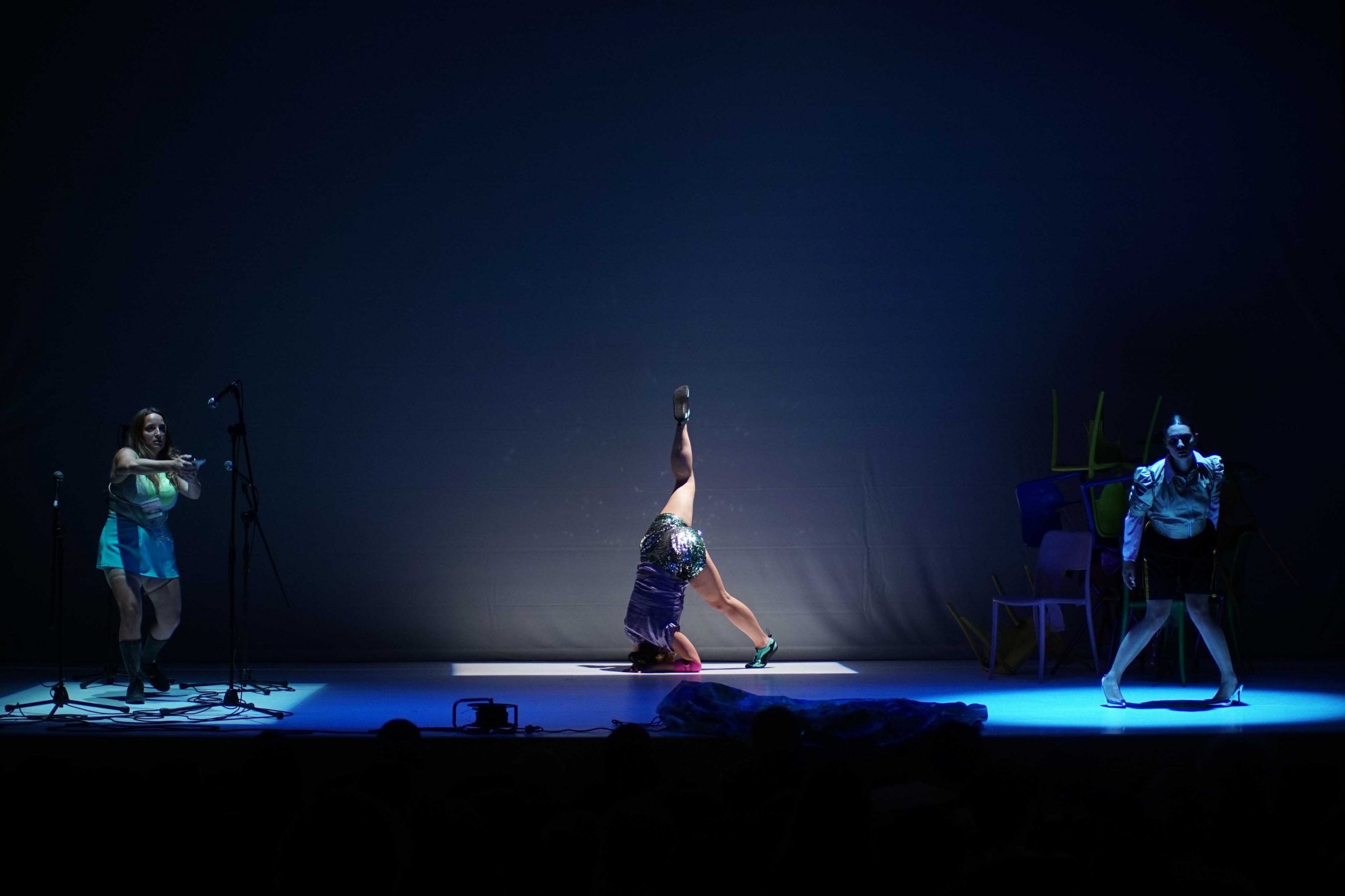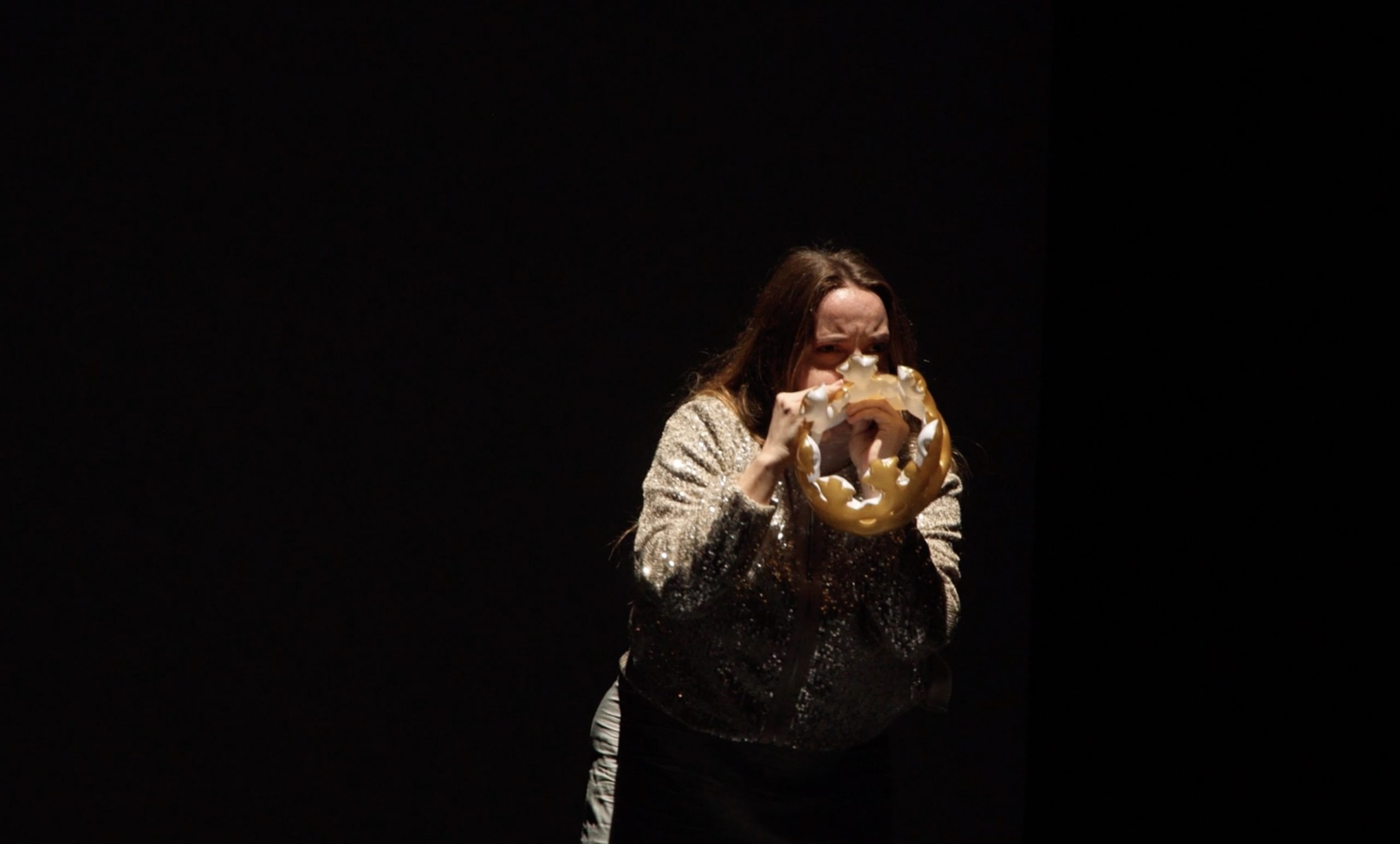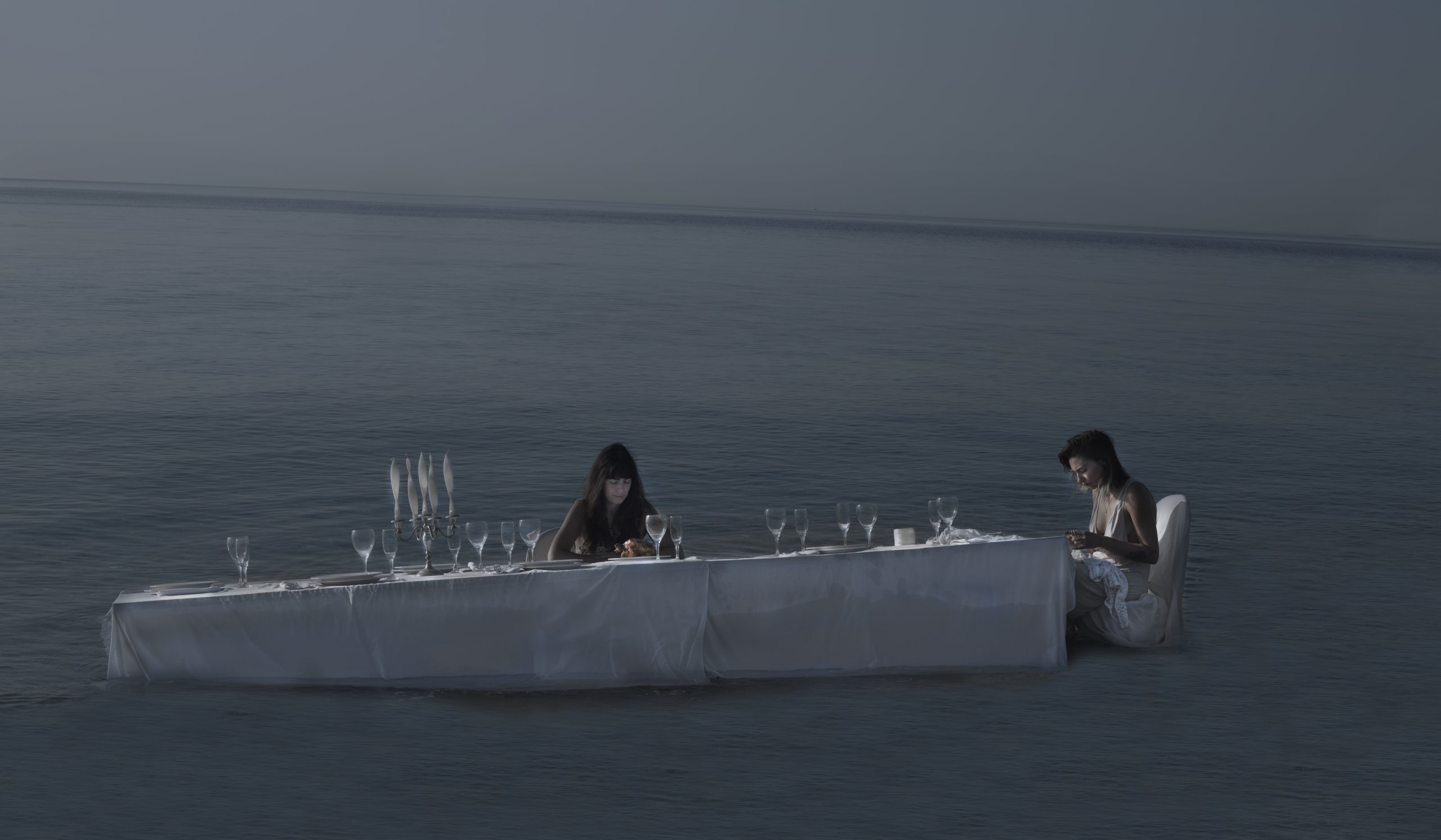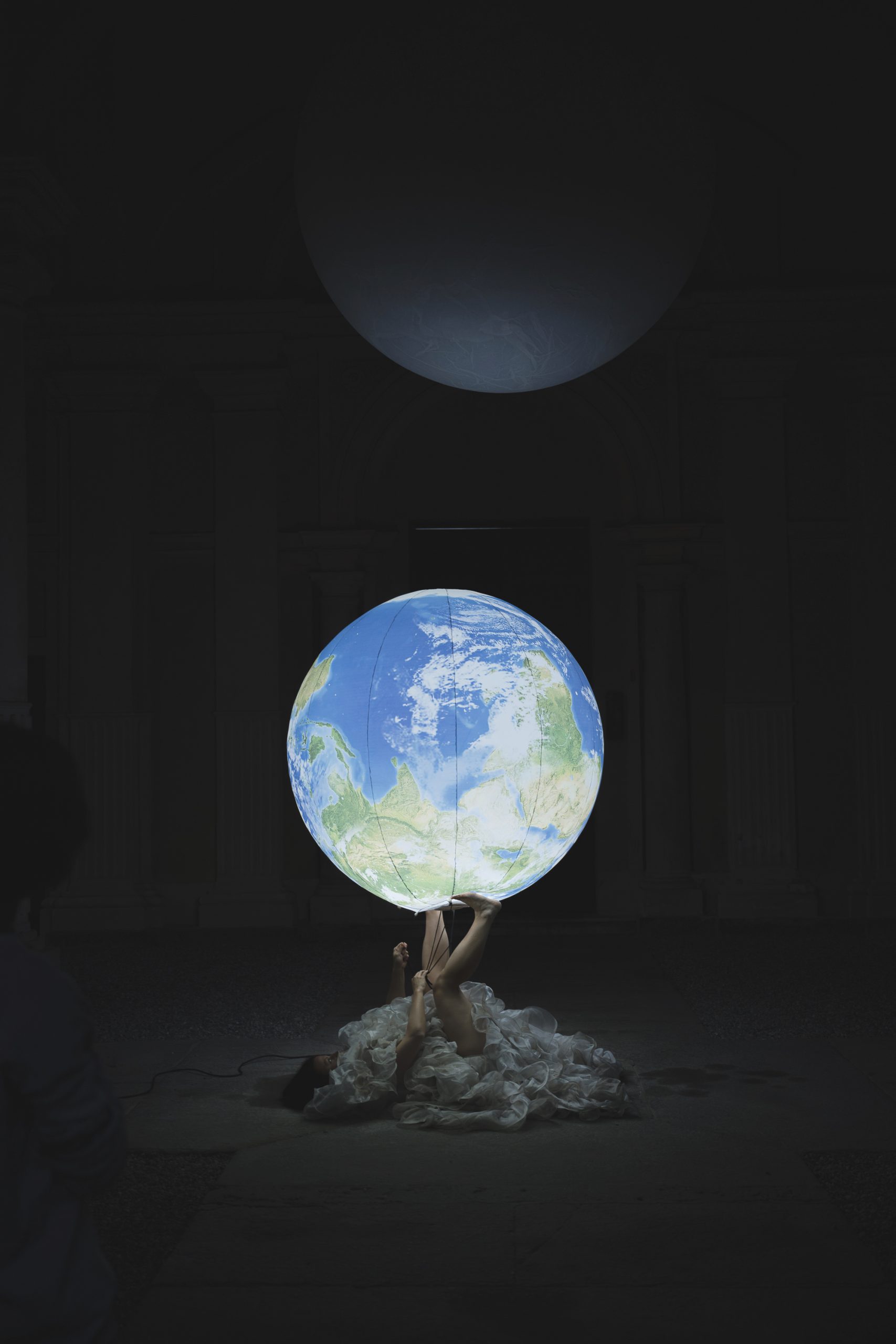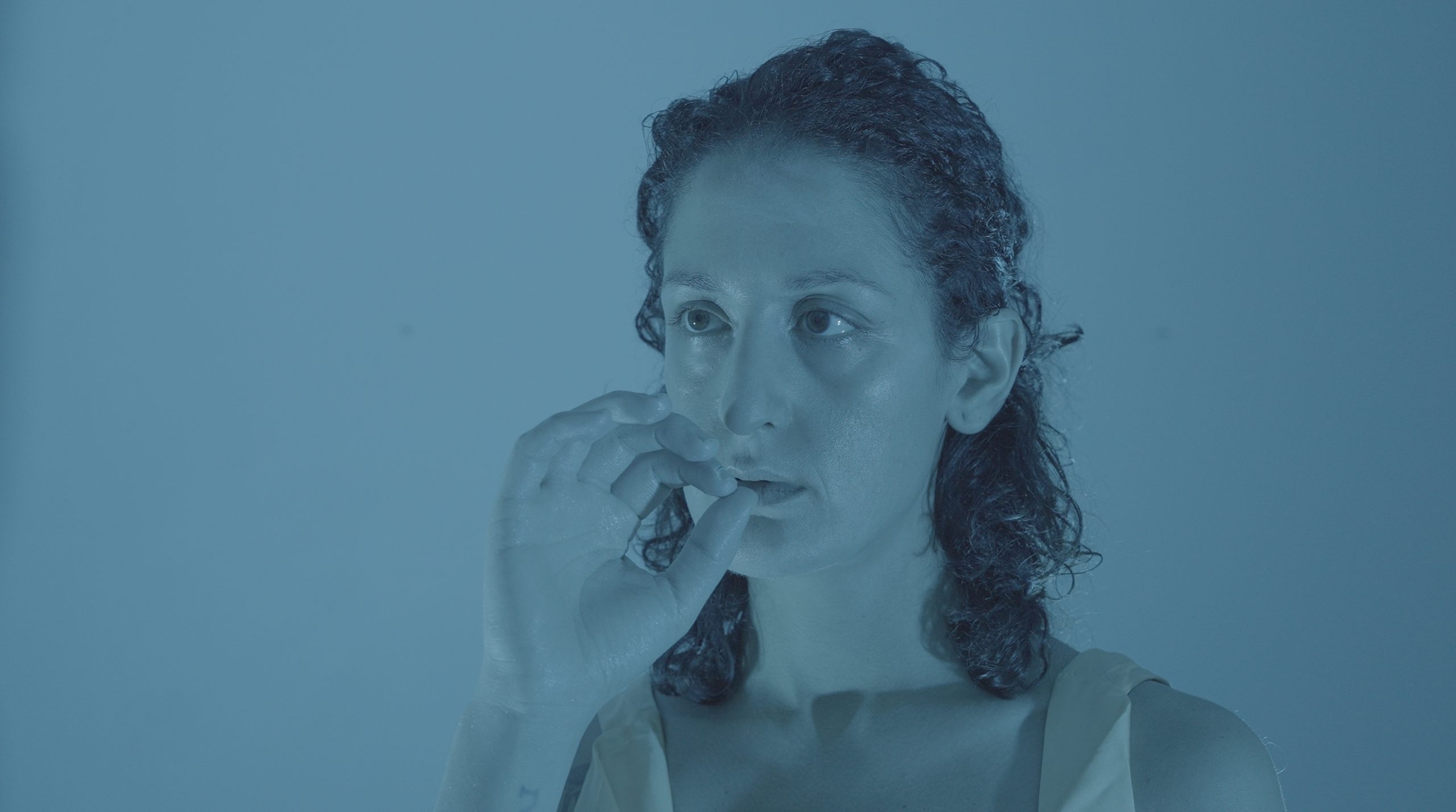
Interviews from the ‘PRESENT IS THE NEW FUTURE’ open call
You studied photography at Central Saint Martins in London and are currently a PhD candidate in Performing Arts and New Media at the Silvio d’Amico National Academy of Dramatic Art. Your educational background and artistic practice reflect a transdisciplinary approach, integrating theatre and performance, visual arts and writing. How do these disciplines relate to each other in your projects? How do they influence each other, or rather, what do they bring to one another?
Experiencing the real, especially the contemporary, is a complex experience, and in order to give it back you have to deal with complex, transmedia and multimodal means. My path is jagged because I never planned to be an artist, I didn’t seek it until it presented itself as the only viable path. My first degree was in political science. As a child, I started organising photo archives, reorganising narratives from family albums, then in my twenties I enrolled in a photography school because I wanted to learn the photographic tool, I wanted to learn it well. I have always done mainly portraits. I went from photography to theatre because I wanted what was in the photographic image to move and then to be three-dimensional; then, at some point, I began to feel the photographic lens as a distancing element in my experience of the world. I wanted to be involved and immersed. That’s where performance, theatre and directing came from.
Although both photography and theatre are about looking and being looked at, I find the photographic experience – that of shooting – to be a solitary act of meditation, whereas the theatrical experience is always a ritual with another. I certainly bring a visual aesthetic from photography that I apply to the scenes I develop in my performative work. I find light very important in defining an environment, and I find that the environment often creates stories.
However, I also unhinge this position of visual aesthetics of the stage scene in favour of an exploration more inscribed in the body, entangled with what is unseen, invisible, under the skin.
Your works speak of heterogeneous themes ranging from mythology to everyday life, from human archetypes to the relationship with nature, from future scenarios to archaeological ones. In the end, however, you condense everything into actions translated through various media. As you yourself say, you are more concerned with “the study of action and its aesthetic transfiguration in relation to duration: action that repeats, that ritualises and that becomes a sign”. Could you tell me more about how this is realised in your work?
I said that sentence about five years ago, in 2020. At that time, I was very much involved in the exploration of durational performance. What fascinated me about this kind of performance was the sacred quality of time that manages to generate the potentially infinite repetition of an action, even a minimal one; you could say the liturgical aspect of action. I have always been fascinated by the infinite dramaturgical range that a performer goes through in a single action repeated over and over again, the micro-variations that keep that action alive and curious. One wonders: how can I marvel at performing the same action an infinite number of times? How can I not take for granted the repetition of an action I know – and therefore discover it each time? This kind of performative research, this extension of time, is something I have sought and continue to seek in myself and in the performers I work with; it is a process that is now often included in my directing, even if the scene lasts only five minutes (which can be a lot for a scene in the theatre).
You are also active as a promoter of the art residencies In-ruins, where contemporary art and archaeology meet. Can you tell me about this project and how it fits into a context such as Calabria?
I personally conceived and launched the project in 2018 out of a spontaneous feeling of filling a semiotic void in my home region of Calabria, a territory deeply marked by a colonial past and a peripheral present. Although many artistic initiatives have flourished in Calabria in recent years, we are still too few. If the art world has completely exoticised the theme of the Mediterranean, I feel that, through In-Ruins, I have been responsible for bringing the practices and sensibilities of young and less young artists of absolutely international calibre to the geographical centre of the Mediterranean, to one of the poorest regions of Europe, often in places where hardly anyone would want to curate or exhibit, because there are no critics, no fairs, no art weeks, but only communities of disappearing inhabitants.
Contemporary art allows us to read archaeology and its monumental heritage from an expanded perspective: decolonial in relation to dominant cultural narratives, trans-temporal in relation to the notion of history, mobile in relation to the notion of protection and preservation. Thanks to such perspectives, art becomes a crystalline prism through which to view material and immaterial archaeological heritage in the light of the present.
For all this, In-ruins is close to my heart and I find it a valuable project. In fact, the artistic process fits into the pebbles of the missing ruins, sowing worlds in this interstice. Since 2021 In-ruins has had a permanent team consisting of Nicola Guastamacchia and Nicola Nitido and myself. The main activity of the project is the artistic residencies, which I co-directed until last year, and which, from this year on, have been held not only in Calabria but also in Basilicata.
What are you working on at the moment?
I am currently working on two projects: one is a doctoral thesis at the Silvio d’Amico National Academy of Dramatic Art, and the other is the development of an installation work made possible thanks to the collaboration with numerous partner organisations – including BJCEM, Museo Egizio, ECCOM and Museo delle Civiltà for Italy – within Contested Desires, a transnational project dedicated to involving artists in reflecting on the colonial impact on European cultural heritage. I have been selected as the artist for Italy and will soon be travelling to Larnaca, Cyprus, and then to the Kunstfort in Amsterdam for the first phase of the realisation of the work, which will be exhibited next July.
PHOTO CREDITS
Parcae, 2022, site-specific performance, photo credits Ersilia Tarullo
After Party, 2024, stage performance, photo courtesy Primavera dei Teatri Festival, photo credits Angelo Maggio
After Party, 2023, photo courtesy La Biennale di Venezia, June 2023
Dragunare (Parcae), 2021, digital photography, variable size, multiple editions
After Party, 2024, site specific performance, Microwave Fest, Villa Rey, Bastion, photo credits Stefano Mattea






















